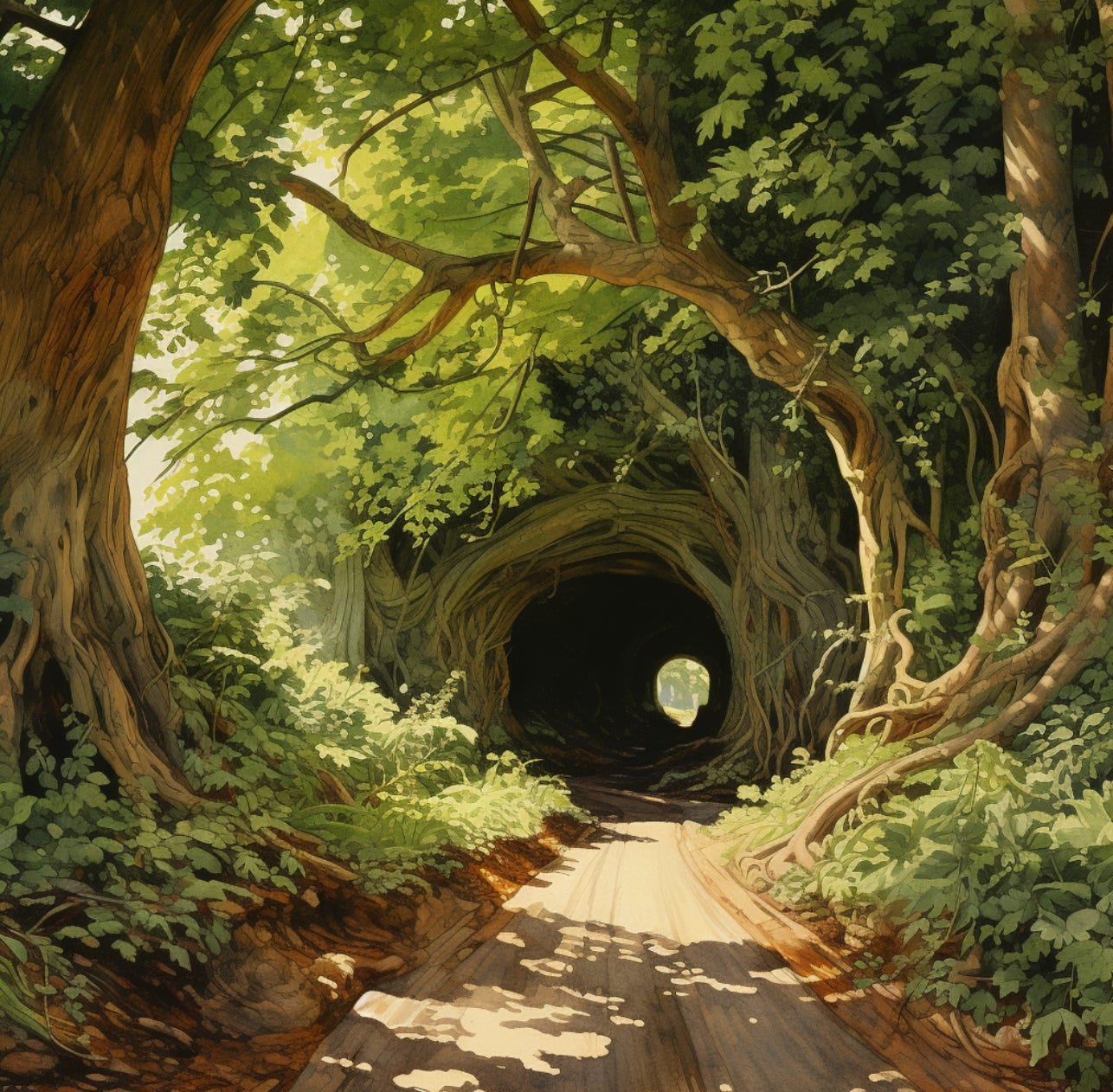Like many hamlets lodged throughout the Cotswolds, Windy Hollow’s name has an exacting historical origin, a fact I found fascinating given the Tolkien flavor of the region.
Bourton-on-the-Water, for instance, is not, as a Yank like me might have deduced, a drink at the local pub, but rather "Burh" (Olde Saxon for fortified camp) plus "ton" (a village), with a river running through it for good measure.
"Stow" (a meeting place, often for worship) and "wold" (high rolling fields) yield Stow-on-the-Wold.
And my favorite, Castle Combe, which is literally a castle in a small valley.
Ergo, the Cotswolds, or small sheep enclosures (“cots”), spread across rolling fields, which explained the wooly flocks speckling the distant hills like dirty whitecaps.
So it made a certain sense when the dilapidated sedan transporting us sank into a slender trench and tunneled forward at root level.
A holloway, or “hola weg,” is a path carved into the earth over centuries by foot and hoof traffic. Some date as far back as the Iron Age. And many are still in use today.
There was a primal, forgotten feel to its shadowed walls of earth and green that evoked storybook adventures with hobbits and Druids and reminded me of the ravines along Lake Michigan where Aris and I grew up. Even the wind picked up a bit as we drove deeper into the shoot, gusting us along the ancient thoroughfare to our final destination.
We were right there, on the cusp of it. Both of us could feel it in our bones. Instinctively, we turned to one another as we had so many times in the past at the start of something new and undoubtedly magnificent.
Out we shot from the holloway just as the first drops of rain began to land. Windy Hollow lay before us, its low-slung limestone buildings tucked neatly into the creases of the sloping uplands.
Our driver skidded to a stop on the High Street and deposited us with our luggage onto the cobblestones before rattling away into the rain.
Alone, the moment could have been terrifying. With Aris, it was exhilarating.




![The Summer We Said Goodbye [Installment 5]](https://substackcdn.com/image/fetch/w_280,h_280,c_fill,f_auto,q_auto:good,fl_progressive:steep,g_auto/https%3A%2F%2Fsubstack-post-media.s3.amazonaws.com%2Fpublic%2Fimages%2F13e2dadd-a76a-4c40-8454-9e6d8771f8b0_779x778.png)